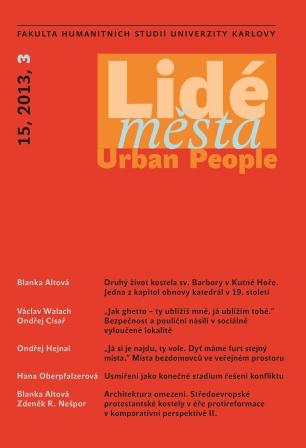„Já si je najdu, ty vole. Dyť máme furt stejný místa.“ Místa bezdomovců ve veřejném prostoru
“I’ll find you, man. ’Cuz we still have the same spots.” The Places of the Homeless in the Public Space
Author(s): Ondřej HejnalSubject(s): Anthropology
Published by: Univerzita Karlova v Praze - Fakulta humanitních studií
Keywords: homelessness; public space; construction of place; practices; narratives
Summary/Abstract: The aim of this article is to interpret the construction of “homeless places” within the public space. Drawing from the concepts of practice and of narration of places, from my long-term ethnographic fieldwork in a Czech mid-sized city, from semi-structured interviews with institutional actors, and from the analysis of media messages and other materials, I describe the representations of “homeless places” by institutional actors (politicians, municipal policemen, etc.). Further, I reinterpret the key aspects of these representations from the perspective of ethnographic data and present a categorization schema, through which the homeless differentiate and practice places in the public space. The main issues structuring the representations produced by institutional actors and by media messages consist of “coercive begging”, public alcohol drinking and aggression (associated with criminality). However, the conditions leading to these practices are greatly under-represented. Alcohol consumption represents an important part of solidarity mechanisms, establishing the boundaries of a particular homeless group and allowing for its survival. Aggression, as a marginal practice, may be viewed partly as serving the function of defending these solidarity mechanisms, and partly as a result of the frequent “cabin fevers” and of specific “meeting rituals”. The so-called “coercive begging” is also a rather marginal practice, performed by a few “active begging specialists”. In the final section of the article, I describe examples of “homeless places” based on 11 categories (dimensions of contrast), with a special focus on the communal activities creating these places, on the interplay between the practices of the homeless and of the physical attributes of places, and on the maintenance of these places in everyday narratives and interactions. In this respect, a specific part of public space can designate two very different places, depending on the actors who create them (i.e. the institutional actors and the media versus the homeless).
Journal: Lidé města
- Issue Year: 15/2013
- Issue No: 3
- Page Range: 419-441
- Page Count: 23
- Language: Czech

